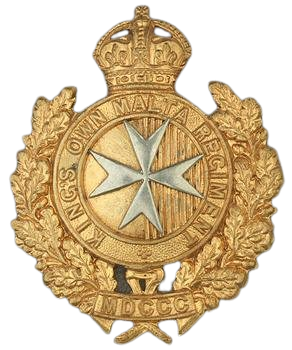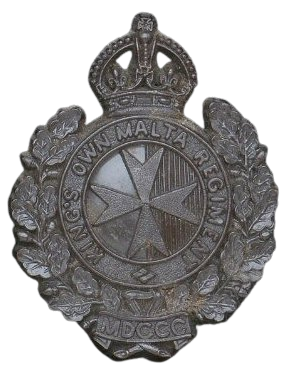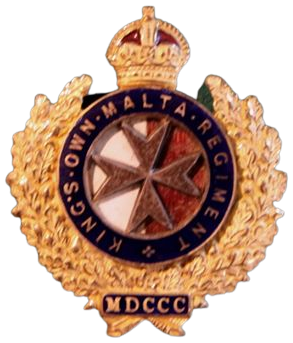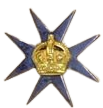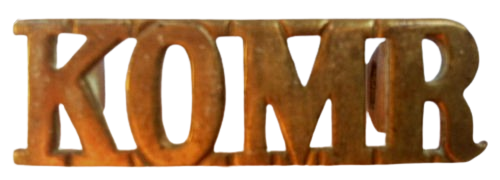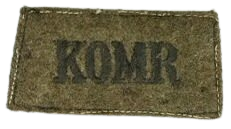The badge worn by members of the KOMR during the Second World War consists of an annulus with the Regiment’s title KING’S OWN MALTA REGIMENT. At centre is an eight-pointed Maltese Cross in white metal mounted on a field denoting the Maltese Colours, all within a wreath of oak leaves. At bottom is a scroll with ‘MDCCC’ (1800), commemorating the Maltese Light Infantry during the blockade of the French garrison of occupation, and as the first Maltese regiment raised by the British. The whole topped by a Tudor or King’s Crown, denoting the British monarch of the time.
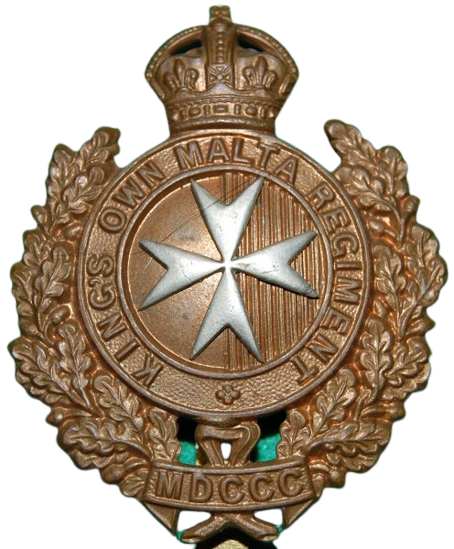
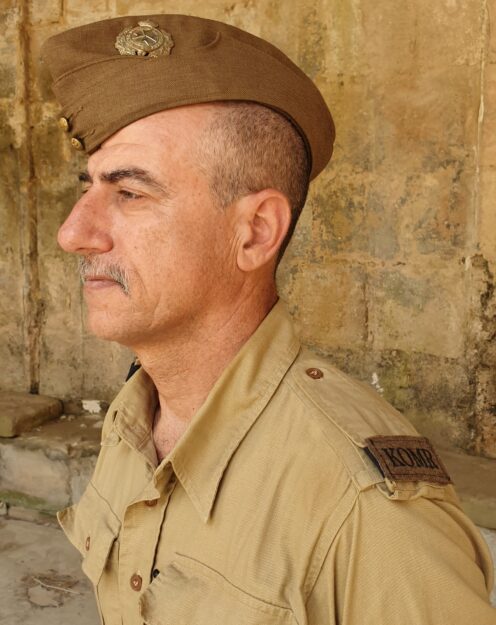
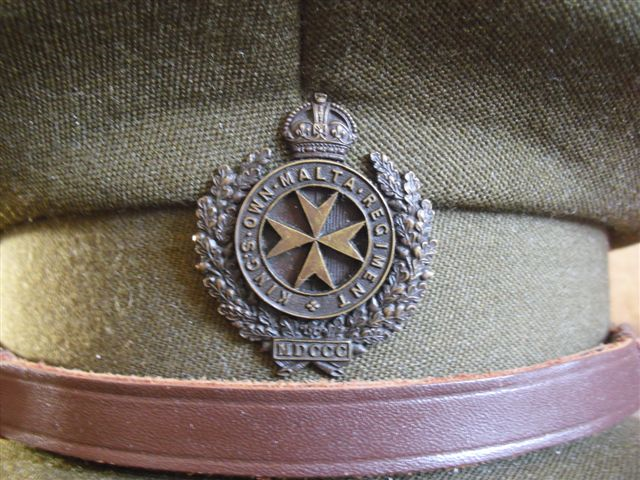
HISTORY OF THE BADGE
Since 1800, when Britain administered and later took possession of the Maltese islands, a number of infantry regiments were raised such as the Maltese Light Infantry, the Royal Regiment of Malta and the Royal Malta Fencible Regiment, which all were regular regiments, as well as the short-lived Malta Militia of 1852-57. None of these regiments bore any connection with the lineage of the KOMR.
The badge knows its origin to the first infantry militia raised in Malta on a regimental strength between 1889 and 1902, the Royal Malta Regiment of Militia. Since at the time the Foreign Service (White Cork) Helmet was still part of the ‘Warm Climate’ uniform, a helmet plate of a different pattern was worn. The badge worn on the side cap or glengarry was very similar to the later one worn by the KOMR except for a number of differences; the Regimental title was shown shortened to ROYAL MALTA MILITIA and was on a belt or strap rather than on an annulus, the Maltese Colours within were reversed and the hatching denoting the red was to the left of the badge and not to the right as on the flag and the monarch’s crown was the ‘flat topped’ or Imperial Crown which was made for Queen Victoria to wear on her bun when crowned Empress of India.
Following the demise of Queen Victoria in 1901, her son Albert Edward ascended on the British throne as King’s Edward VII. On his first visit to Malta in 1903, and the first in Malta by a British monarch, he accepted becoming the Regiment’s Patron and Colonel-in-Chief. In return he was pleased to redesignate the name of the Regiment to The King’s Own Malta Regiment of Militia. A new badge was introduced, based on the former one, except that an annulus was introduced for the new title KING’S OWN MALTA REGIMENT OF MILITIA and the crown changed to a Tudor or King’s Crown.
In 1931, since the term ‘Militia’ had long been dropped from use in the British Army, the Regiment was reorganised on territorial basis and renamed the King’s Own Malta Regiment. Once again, the badge was also changed but remaining on the same design as the former. The annulus now bore the new name KING’S OWN MALTA REGIMENT and the erred Maltese Colours were corrected and placed in their proper sequence.

After the demise of King George VI in 1953, Queen Elizabeth II became the new monarch and the crown on just about every badge worn by British and Colonial regiments was changed to the St. Edward’s or Queen’s Crown. This change did not occur with the badge of the KOMR, however, officers of the Regiment had the King’s Crown removed from their badges by local craftsmen and replaced by matching Queen’s Crown. The badge remained being worn until the KOMR was disbanded in 1972.
A number of versions of the 1931-1972 pattern badge were worn, and are as follows:
- Other Ranks’
Cap badge — brass and white metal (bi-metal), large.
Side cap and beret badge — same. - Officers’
Cap badge — enamelled for No. 1 Dress, large.
Cap badge — bronze for Service Dress, large.
Side cap — enamelled collar badge. - Officers and Warrant Officers
Cap badge — Bakelite, large, ‘war economy’.
Slide through the various cap badges, collar badges and shoulder titles and get a visual glimpse
Article researched by Denis A. Darmanin
References:
– The History of The King’s Own Malta Regiment and The Armed Forces of the Order of St. John, Capt. J.M Wismayer, Malta 1989.
– Author’s records

